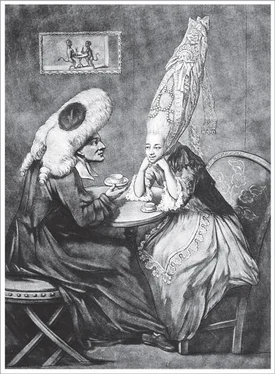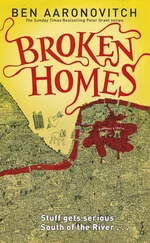Bill Bryson - At Home
Здесь есть возможность читать онлайн «Bill Bryson - At Home» весь текст электронной книги совершенно бесплатно (целиком полную версию без сокращений). В некоторых случаях можно слушать аудио, скачать через торрент в формате fb2 и присутствует краткое содержание. Жанр: Старинная литература, на английском языке. Описание произведения, (предисловие) а так же отзывы посетителей доступны на портале библиотеки ЛибКат.
- Название:At Home
- Автор:
- Жанр:
- Год:неизвестен
- ISBN:нет данных
- Рейтинг книги:4 / 5. Голосов: 1
-
Избранное:Добавить в избранное
- Отзывы:
-
Ваша оценка:
- 80
- 1
- 2
- 3
- 4
- 5
At Home: краткое содержание, описание и аннотация
Предлагаем к чтению аннотацию, описание, краткое содержание или предисловие (зависит от того, что написал сам автор книги «At Home»). Если вы не нашли необходимую информацию о книге — напишите в комментариях, мы постараемся отыскать её.
At Home — читать онлайн бесплатно полную книгу (весь текст) целиком
Ниже представлен текст книги, разбитый по страницам. Система сохранения места последней прочитанной страницы, позволяет с удобством читать онлайн бесплатно книгу «At Home», без необходимости каждый раз заново искать на чём Вы остановились. Поставьте закладку, и сможете в любой момент перейти на страницу, на которой закончили чтение.
Интервал:
Закладка:
As a building material, iron was of two types: cast iron and wrought iron. Cast iron (so called because it is cast in molds) was great at compression—supporting its own weight—but not so good under tension and tended to snap like a pencil when stressed horizontally. So it made excellent pillars, but not beams. Wrought iron, in contrast, was strong enough for horizontal duty but was more complicated, time-consuming, and expensive to manufacture since it had to be repeatedly folded and stirred while it was still molten. As well as making it comparatively strong, the folding and stirring made it ductile—that is, capable of being pulled, rather like taffy, and bent into shapes, which is why decorative objects like gates are made of wrought iron. Together they were used in large-scale construction and engineering projects all over the world.
Curiously, the one place iron never caught on except incidentally was in housing. (Just once, as far as is known, did anyone of note try to use it extensively in the construction of a house—recall from Chapter VII that the bibulous, erratic architectural adventurer James Wyatt built a cast-iron “Bastille” for George III.) Elsewhere, however, iron went from strength to strength—until, that is, it was realized that strength was not actually its most dependable quality. The disturbing fact was that iron sometimes failed spectacularly. Cast iron in particular tended to splinter or fracture if it wasn’t cast perfectly, and imperfections could be impossible to detect. That became tragically manifest in the winter of 1860 at a textile mill in Lawrence, Massachusetts. There, one cold morning, nine hundred women, mostly Irish immigrants, were at work at their clattering machines when one of the cast-iron columns supporting the roof gave way. After a moment’s hesitation, the other columns in the row failed one by one, like buttons popping on a shirt. The terrified workers rushed for the exits, but before many could get out, the building collapsed with a roar that none who heard it would ever forget. As many as two hundred workers died, though remarkably no one bothered, then or afterward, to make a formal count. Hundreds more were injured. Many of those trapped inside were hideously incinerated as fires spread from broken lamps.
In the following decade iron’s standing suffered a further blow when a bridge over the Ashtabula River in Ohio collapsed as a passenger train crossed over it. Seventy-six people were killed. That accident was recalled with uncanny precision three years later, almost to the day, on the Tay Bridge in Scotland. As a train crossed it in bad weather, a section of the bridge gave way, hurling the carriages into the waters far below and killing almost an identical number of people as had died at Ashtabula. Those were the most notorious of the tragedies, but iron mishaps on a smaller scale were almost routine. Railway boilers made of cast iron sometimes exploded, and rails commonly worked loose or buckled under the strain of heavy loads or shifting weather, causing derailments. It was in fact iron’s shortcomings that in large part allowed the Erie Canal to remain successful as long as it did. Well into the railway age the canal continued to thrive, which is surprising on the face of it because it was frozen over and unusable for months each winter. Trains could run all year round and, as engines steadily improved, could theoretically carry more freight. In practice, however, iron rails just weren’t strong enough to support really heavy loads.
Something much stronger was needed, and that material was steel—which is just another kind of iron but with a different input of carbon. Steel was a superior material in every way, but it couldn’t be made in bulk because of the high volume of heat required. It was fine for things like swords and razors, but not for large-scale industrial products like beams and rails. In 1856, the problem was unexpectedly—and indeed improbably—solved by an English businessman who knew nothing at all of metallurgy but loved to tinker and experiment. His name was Henry Bessemer and he was already eminently successful from having invented a product known as bronze powder. This was used to apply a fake gilt finish to a wide range of materials. Victorians loved gilt finishes, so Bessemer’s powder made him rich and gave him the leisure to indulge his inventive instincts.
During the Crimean War, Bessemer decided he wanted to build heavy guns, but he could see that he needed a better material than cast or wrought iron, and so began experimenting with new methods of production. Having no real idea what he was doing, he blew air into molten pig iron to see what would happen. What should have happened, according to conventional predictions, was an almighty explosion, which is why no qualified person had tried such a foolhardy experiment before. The iron didn’t explode, however, but produced a flame of very high intensity, which burned out impurities and resulted in hard steel. Suddenly it was possible to make steel in bulk. Steel was the material the Industrial Revolution had been waiting for. Everything from railway lines to oceangoing ships to bridges could be built faster, stronger, and cheaper. Skyscrapers became possible, and so cityscapes were transformed. Railway engines became robust enough to pull mighty loads at speed across continents. Bessemer grew immensely rich and famous, and many towns in America (as many as thirteen, according to one source) named themselves Bessemer or Bessemer City in his honor.
Less than a decade after the Great Exhibition, iron as a structural material was finished—which makes it slightly odd that the most iconic structure of the entire century, about to rise over Paris, was made of that doomed material. I refer of course to the soaring wonder of the age known as the Eiffel Tower. Never in history has a structure been more technologically advanced, materially obsolescent, and gloriously pointless all at the same time. And for that remarkable story, it is necessary to go back upstairs and into a new room.
* Weatherboards became known as clapboards in America; no one knows why.
* One man more than any other fixed our visual image of what Victorian London was like: the French illustrator Gustave Doré (1833–1883), whose illustration of London back streets appears on this page. Doré’s illustrative dominance was a little unexpected because he spoke barely a word of English and actually didn’t spend much time in Britain. Doré’s private life was slightly bizarre in that he conducted a number of torrid affairs with actresses—Sarah Bernhardt was his most celebrated conquest—but lived with his mother and for the whole of his life slept in a room adjoining hers. Doré viewed himself as a great artist, but the rest of the world did not, and he had to settle for being an extremely successful illustrator for books and magazines. He was very popular in England—for many years there was a Doré Gallery in Mayfair that dealt exclusively in his works—and is best remembered now for his dark drawings of London life, particularly for the scenes of squalor along the back streets. It is interesting to reflect that a very large part of our visual impression of nineteenth-century London before photography is based on the drawings of an artist who worked from memory in a studio in Paris, and got much of it wrong. Blanchard Jerrold, the man who supplied the text for the drawings, was driven to despair by many of his inaccuracies. (If that name Jerrold seems vaguely familiar, he is the son of the Punch journalist who first called the Great Exhibition hall the “Crystal Palace.”)
• CHAPTER X •
THE PASSAGE
I
His full name was Alexandre Gustave Boenickhausen-Eiffel, and he was headed for a life of respectable obscurity in his uncle’s vinegar factory in Dijon when the factory failed and he took up engineering.
Читать дальшеИнтервал:
Закладка:
Похожие книги на «At Home»
Представляем Вашему вниманию похожие книги на «At Home» списком для выбора. Мы отобрали схожую по названию и смыслу литературу в надежде предоставить читателям больше вариантов отыскать новые, интересные, ещё непрочитанные произведения.
Обсуждение, отзывы о книге «At Home» и просто собственные мнения читателей. Оставьте ваши комментарии, напишите, что Вы думаете о произведении, его смысле или главных героях. Укажите что конкретно понравилось, а что нет, и почему Вы так считаете.












